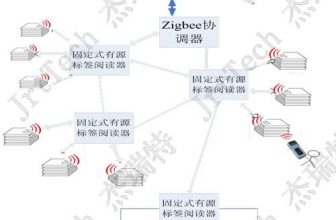
Online and offline commodity real-time synchronization management system
[ad_1]
1. Application background overview
With the prevalence of the Internet of Things era, the application of OTO (online to offline) is in full swing. More and more merchants will combine physical stores with online sales platforms, which makes their business scale rapidly expand. However, with the increase in scale, the synchronization problem of online and offline inventory has become a bottleneck, resulting in the need to increase the spare inventory of offline online items, otherwise the status of the other one is not updated in time after the sale of one end, resulting in frequent orders and lack of customers. Circumstances of return orders. The increase in spare inventory has led to a substantial increase in inventory costs, especially for food products with high quality assurance requirements. Therefore, real-time synchronization of online and offline product sales is very important.
620)this.style.width=620;” border=0 alt=Online and offline commodity real-time synchronization management system src=”http://images.rfidworld.com.cn/FileUpLoadSavePath/2015-04/59705c1a7c53b0008c.png”>
Two, use process
1. Commodity issuance
Commodities are transported from various places to large warehouses. Each link is packaging. After packaging, enter the system and issue cards, and paste the corresponding labels on the corresponding products. Each label has an RFID tag, the ID number of the RFID tag and the wireless module The IDs are bound to each other. When issuing the card, swipe the label against the card issuer to obtain the card number for issuing the card.
2. Packing Shipment List
In the packing process, the operator puts the goods into containers in different stores. Each container has a box reading head. When putting the goods into the box, swipe the label of the goods corresponding to the box reading head to confirm that they are put in. One container will hold about 100 ~200 products, when the packing is completed, the system will generate a box list and synchronize the list to the corresponding store for easy inventory.
3. Store inventory (pre-stores use RFID inventory method)
When the goods are transported to the corresponding store, the store administrator will check the goods. At this time, the check button of each cargo box will be activated, and the system will automatically check each product and complete the check in about 8 minutes. If the corresponding goods are The goods counted by the on-site system of the box are consistent with the packing and delivery order, and you can directly enter the store warehouse. If there are omissions, then check the work.
4. Offline synchronization
When the product is normally sold, if a customer has successfully purchased the product on the trading platform, the trading platform will send an instruction to the corresponding label of the product. At this time, the “sold” indicator of the label will flash to remind the waiter and on-site customers to consider the power consumption of the label Minimize charging, and the label is updated every 5 minutes. And when a customer picks up the product on site, the label will be updated immediately to ensure that it has been sold online, saving electricity and avoiding conflicts.
5. Online synchronization
At the cashier of the store, if the product is entered through the cashier, it means that it has been sold offline. The cashier will synchronize the information sold offline to the line, and the product cannot be sold online at this time.
6. Count expired goods
When the business ends at night, the system will issue instructions to the expired products in the store, so that the labels of the expired products will flash, and remind the administrator to remove them from the shelves.
Three, system introduction
620)this.style.width=620;” border=0 alt=online and offline commodity real-time synchronization management system src=”http://images.rfidworld.com.cn/FileUpLoadSavePath/2015-04/742d2d6d5c071e8da4e.jpg”>
Figure 1 System topology diagram
As shown in Figure 2, the shopping mall wireless management system closely links the information of each commodity, unified management and synchronization on a platform, and achieves perfect synchronization between online and offline.
The offline synchronization process is: when a customer successfully purchases a product on the online trading platform, the system will feed back the product sales information to the mall, and the 2.4G synchronization system will notify the sales information to the label of the corresponding product. The LED light will light up to remind customers that the product has been sold online and cannot be purchased.
4. Advantages and highlights
620)this.style.width=620;” border=0 alt=Online and offline commodity real-time synchronization management system src=”http://images.rfidworld.com.cn/FileUpLoadSavePath/2015-04/290d5551a631637e7c6.jpg”>
Figure 2 Synchronous management system for agricultural and sideline products
1. No wiring and labor saving
The system adopts 2.4G wireless networking communication, which fully guarantees the portability of installation and the convenience of subsequent maintenance. The positioning label is small and light, not affected by the location of the product, and can be used directly by sticking it.
2. Recognizing dead spots
Since the 2.4G wireless signal is sent out in the form of a spherical wave, there is no special requirement for the orientation of the positioning label affixed to the product, and it can be recognized by the system no matter how the product is placed.
3. Low radiation impact
Passive tags need the host to provide energy when working, so the host’s wireless signal transmission power is relatively high. When the wireless signal power reaches a certain value, it will be harmful to the human body. Relative to passive tags, active tags can provide energy by themselves, so that the transmission power of the host and tag can be made very small, which is about one-tenth of the radiation of a mobile phone.
4. Long working hours
The positioning tag uses a low-data, low-power wireless technology, and the sleep power consumption is uA level, so that the positioning tag can work for a long time, and the working time can be as long as 2 years.
5. Case specific plan
Online and offline commodity real-time synchronization management system.pdf
[ad_2]




